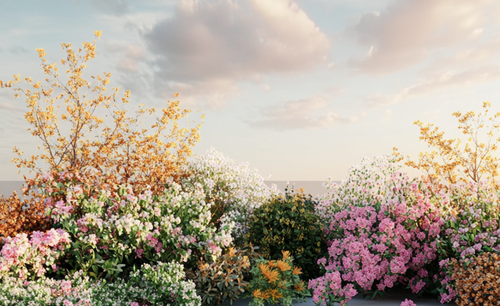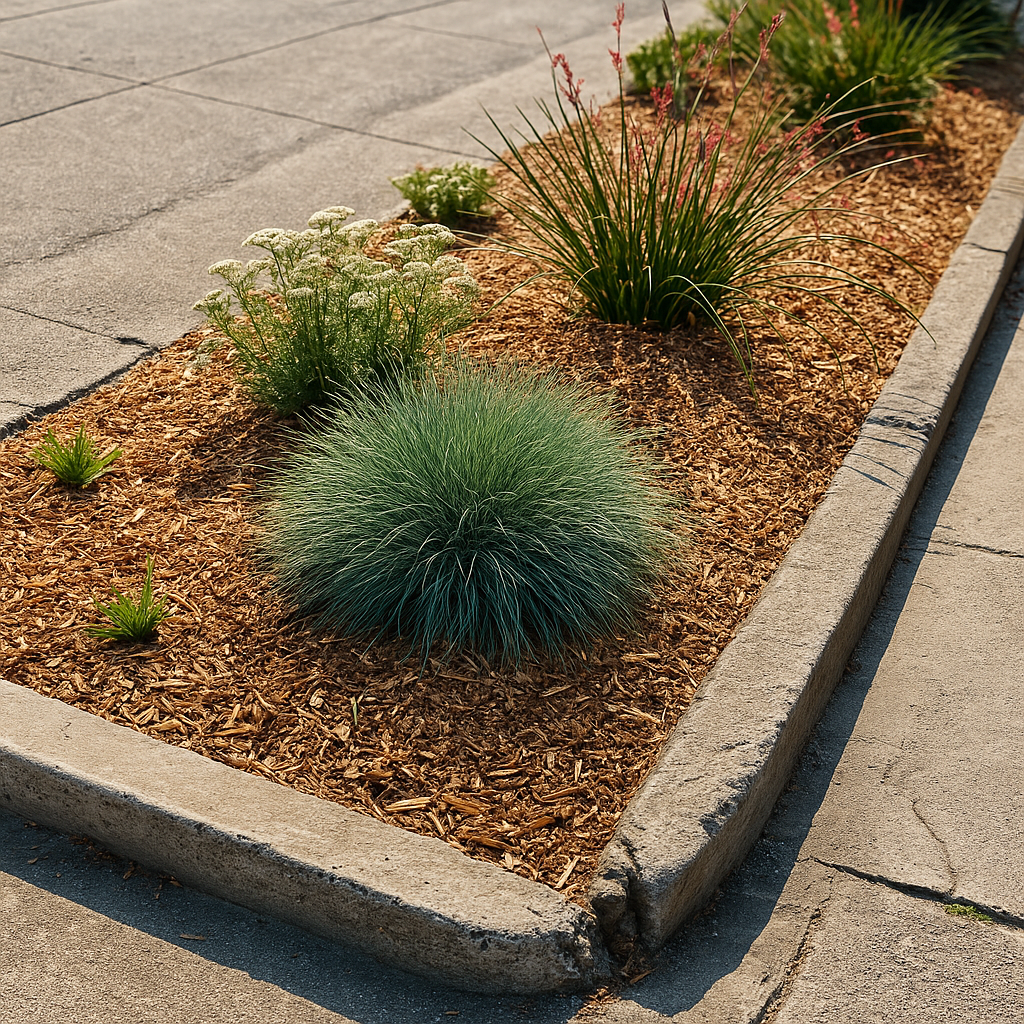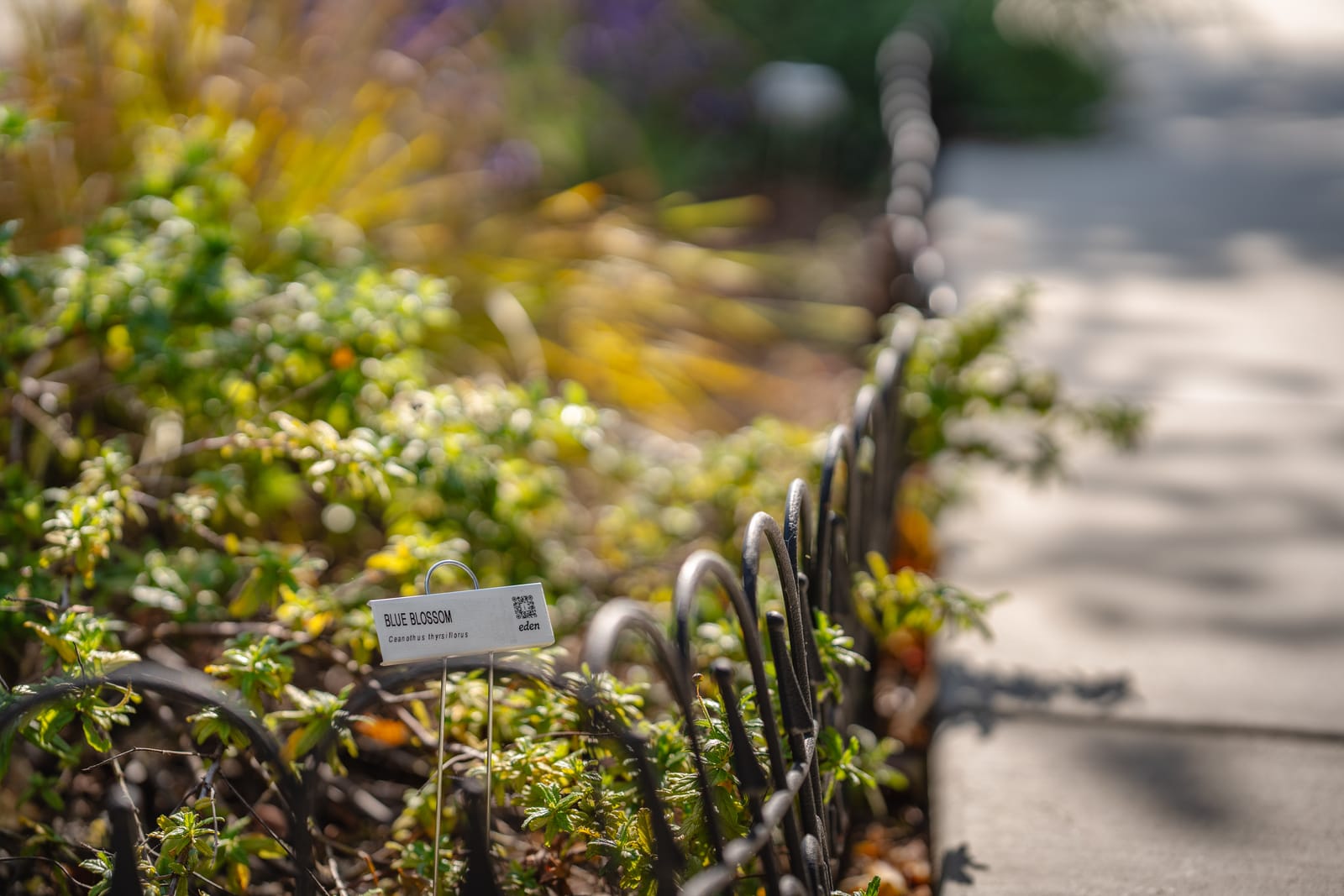San Francisco’s sidewalk gardens may look effortless — colorful flowers blooming at the curb, bees buzzing, greenery softening the edges of concrete. But here’s the truth: growing a thriving garden on the street is tough.
Many well-intentioned residents plant with hope, only to watch their gardens wither under harsh sun, poor soil, or inconsistent watering. The sidewalk is one of the most difficult places to grow — but also one of the most impactful. And with the right approach, even the most unforgiving concrete can become something vibrant and alive.
Here’s what really makes sidewalk gardening challenging — and what actually works to overcome it.
1. Concrete is Hotter Than You Think
The “urban heat island” effect is real. Pavement doesn’t just soak up heat — it radiates it back into the surrounding space. That means your sidewalk garden could be battling temperatures as high as 110–120°F on a sunny summer day.
For plant roots, that’s brutal.
What Works:
- Choose heat-tolerant native species like:
- California fescue (Festuca californica)
- Yarrow (Achillea millefolium)
- Red or yellow yucca (Hesperaloe parviflora)
- Add a thick layer of mulch to insulate roots and prevent rapid evaporation.
- Avoid using dark or reflective materials that trap more heat around the soil.
2. Watering Is a Daily Challenge
Most sidewalks in SF don’t have a nearby hose bib or drip system — and if you’re hand-watering every day, it can become a burden fast. Add in dry microclimates and strong wind patterns, and your plants are likely to dry out faster than expected.
What Works:
- Prioritize drought-tolerant natives adapted to local conditions.
- Water deeply early in the morning or at dusk to reduce evaporation.
- Use passive systems like:
- Wine bottle irrigation (upside-down in soil)
- Ollas (unglazed clay pots that release moisture slowly underground)
3. Soil Quality Is Often Poor (or Nonexistent)
Most curb strips weren’t built for gardening — they’re often compacted, dry, or filled with construction rubble. That’s tough for even the hardiest roots to push through.
What Works:
- Dig out any debris and amend the soil with compost to improve structure and nutrients.
- Use permeable soil mixes that allow water to drain instead of pooling or running off.
- Avoid fully raised beds unless they’re permitted and secured — loose structures on sidewalks can be removed by the city.
4. Not All Pretty Plants Belong on the Sidewalk
We get it — you want color. But not every showy plant is sidewalk-safe. Some require constant attention, grow too fast, shed leaves or petals constantly, or attract pests. Others may violate local height restrictions or crowd the pedestrian path.
What Works:
- Choose compact, non-invasive species that stay neat and manageable.
- Keep plants under 3 feet tall to comply with city guidelines and maintain sightlines.
- Great choices include:
- Coral bells (Heuchera spp.)
- Buckwheat (Eriogonum spp.)
- California poppies
- Native sages
5. Maintenance Matters More Than You Think
Even low-maintenance gardens aren’t no-maintenance. If left unchecked, even native plants can grow messy, block walkways, or become neglected — especially during dry spells or when seasons shift.
What Works:
- Set a monthly care schedule (even 30 minutes helps!)
- Choose plants that don’t require constant pruning or deadheading
- Team up with a neighbor to share watering and upkeep duties
Even Concrete Can Bloom
Sidewalk gardening isn’t effortless — but it’s one of the most powerful things you can do to bring life back to your block.
With the right plant choices, soil prep, watering plan, and expectations, you can turn even the toughest strip of concrete into a blooming, low-maintenance, climate-resilient space that people notice and nature appreciates.
Ready to design a sidewalk garden that survives the street — and thrives in San Francisco’s microclimates?
Start with Eden → edenstudio.ai
#MakeConcreteBloom #SidewalkGardenSF #UrbanGreening #FromGrayToGreen #TinyGardenBigImpact #EcoOnTheEdge #RewildTheCity #PublicSpaceDesign







